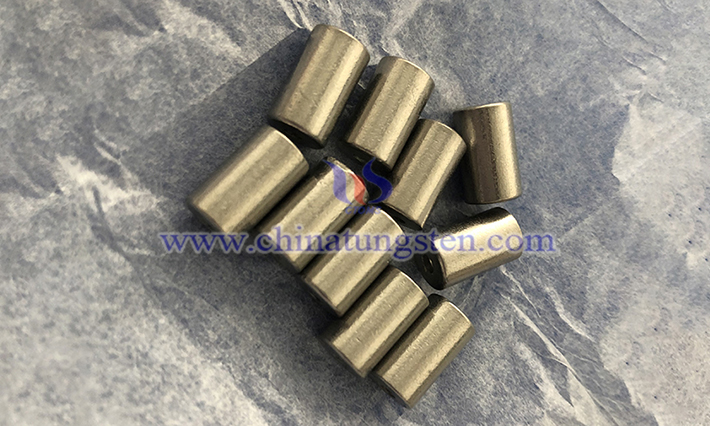Composition and Structure of Barium Tungsten Electrode
- Details
- Category: Tungsten Information
- Published on Thursday, 10 April 2025 20:11
Barium tungsten electrode is an electrode material designed to improve the performance of electron emission. Its composition and structure are precisely designed to meet the special needs of high-intensity gas discharge lamps and other fields. The following is an explanation from four aspects: composition, structural characteristics, preparation process and performance advantages:

I. Analysis of the Core Components of Barium Tungsten Electrodes.
1. Matrix Material: Tungsten Sponge
High-purity tungsten powder (impurity content must be controlled at 0.001%-0.002%) is used to form a porous structure through pressing and sintering. The porosity directly affects the electron emission efficiency.
Tungsten powder particles need to be strictly screened (such as 250 mesh/cm²) to ensure that the matrix has both high strength and suitable pore distribution.
2. Active Material: Barium Salt
Barium aluminate (Ba₃Al₂O₆): mainstream emission material, synthesized by solid phase reaction, melting point 1750℃, easy to absorb moisture in the air, need to be sealed and stored.
Barium strontium tungstate (BaSrWO₆): alternative, more stable, need to be used with an activator (such as zirconium hydride) to release free barium ions.
II. Structural Design Features of Barium Tungsten Electrodes
1. Porous Composite Structure
Sponge skeleton: provides high specific surface area, enhances active material adhesion and electron emission uniformity.
Impregnation process: infiltrate barium salt paste into pores, and form a "reserve" emission layer after high temperature sintering to ensure the continuous diffusion of barium ions in long-term use.
2. Surface Functional Layer
After activation, a barium-barium oxide (Ba/BaO) dynamic balance layer is formed on the surface, reducing the work function to 1.6 eV, significantly improving the electron emission efficiency.

III. Key Steps in the Preparation Process of Barium Tungsten Electrodes
1. Preparation of Tungsten Sponge
Tungsten powder is mixed with paraffin and aviation gasoline, and then pressed and sintered twice at low temperature (600-1400℃) and high temperature (2000℃) to form a porous matrix.
2. Synthesis and Impregnation of Barium Salt
Barium aluminate: It is produced by mixing barium carbonate and alumina, ball milling, and high-temperature roasting.
Impregnation process: The barium salt paste is applied to the tungsten matrix, sintered at 1750℃ to decompose the salt and react with tungsten to form an emission layer.
3. Vacuum Packaging
The finished electrode needs to be sealed and stored after vacuuming to avoid performance degradation caused by moisture absorption of barium salt.
IV. Performance Advantages and Application Scenarios of Barium Tungsten Electrodes
1. Electron Emission Performance
Low work function (φ=1.6 eV): Compared with pure tungsten (φ≈4.5 eV), the electron emission capacity is greatly improved.
High current density (10 A/cm²): It supports large current discharge and is suitable for high-frequency flash lamps and other equipment.
2. Environmental Adaptability
Low temperature resistance: can maintain stable electron emission at low temperatures.
Anti-toxicity: less sensitive to residual gases (such as oxygen, water vapor), extending service life.
3. Application Areas
Lighting: HID lamps (high-pressure discharge lamps), xenon flash lamps (photographic equipment, electronic police).
Laser technology: as mercury-purified light source electrodes, improve laser efficiency.
Industrial equipment: industrial counting lamps, pulse sterilization equipment, stage special effects lamps.
- Chinatungsten Online: www.tungsten.com.cn
- CTIA GROUP LTD: en.ctia.group
- Tungsten News & Price: www.ctia.com.cn
- Molybdenum News & Price: news.molybdenum.com.cn
- Tel.: 86 592 5129696; Email: sales@chinatungsten.com